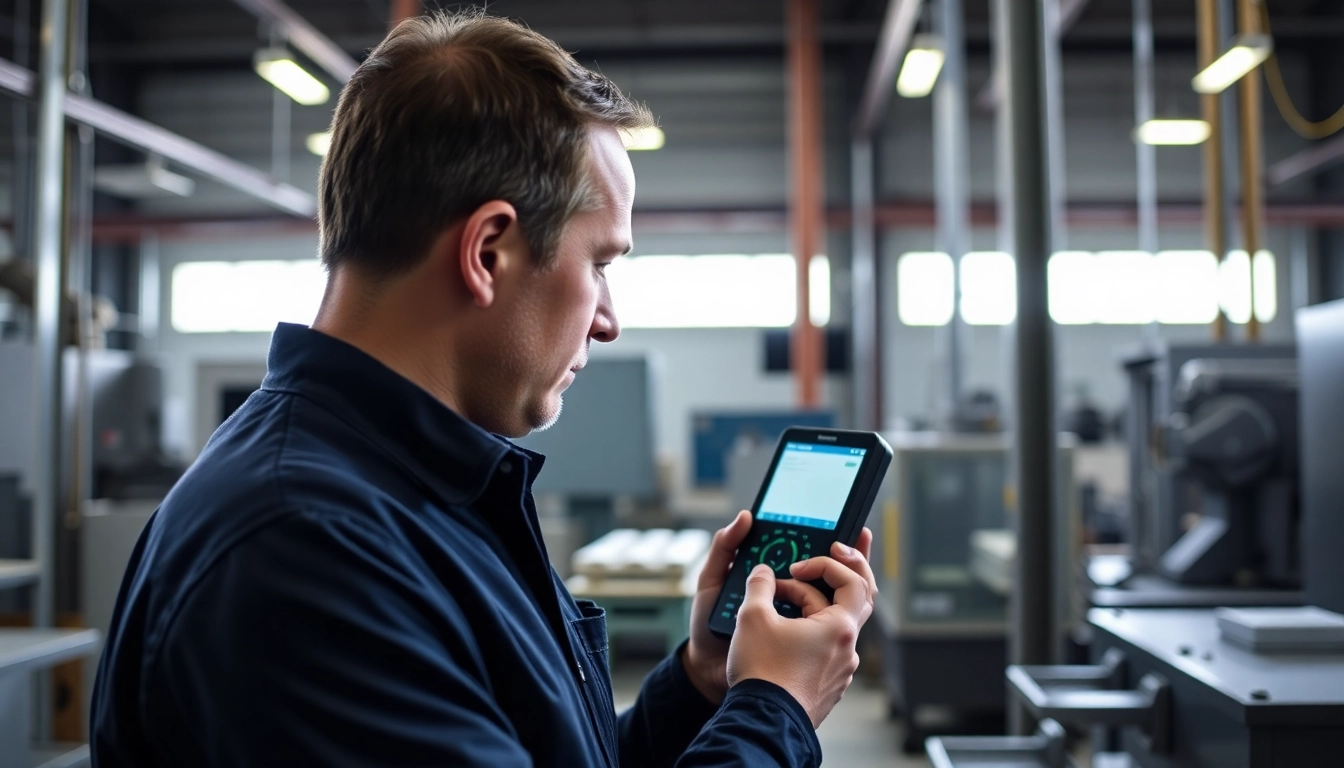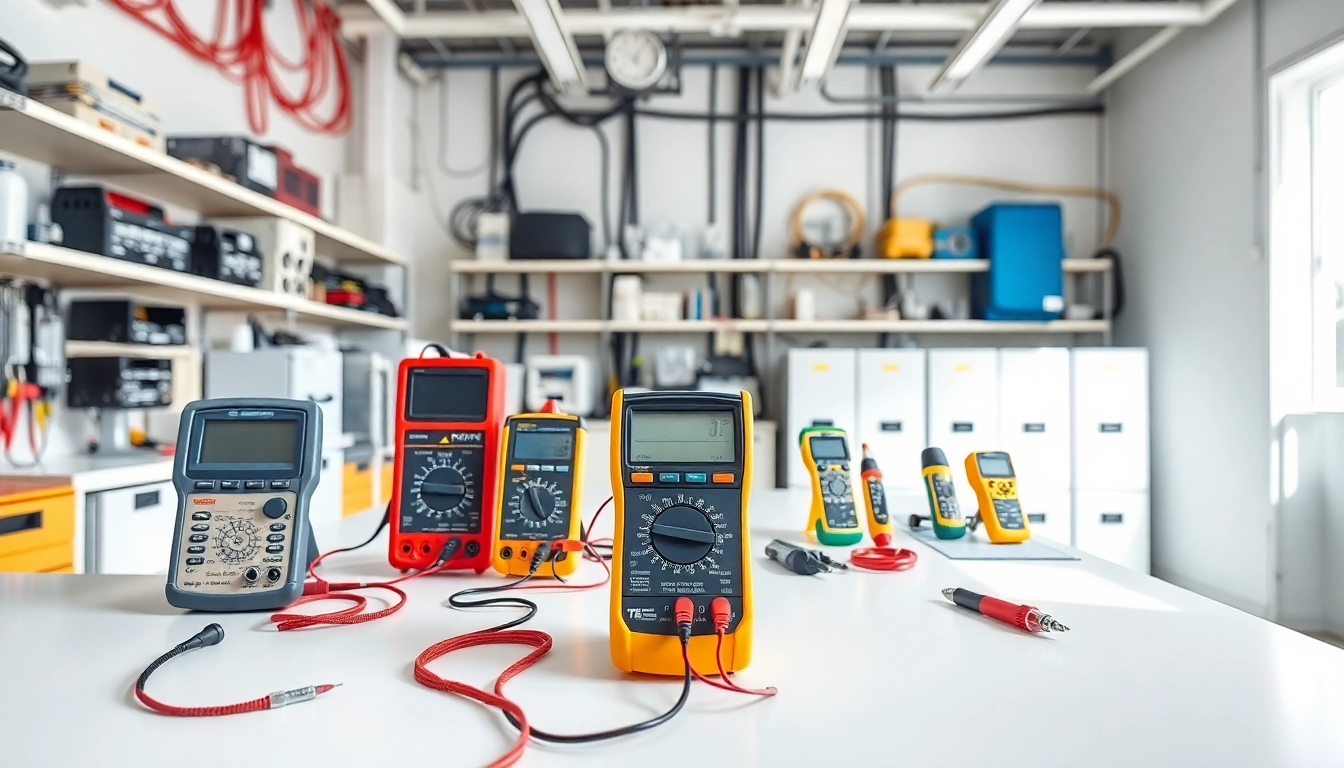Understanding the Bruker EOS 500 Handheld LIBS Analyzer
The Bruker EOS 500 Handheld LIBS Analyzer is a significant advancement in materials analysis technology. Combining portability with sophisticated analytical capabilities, this device has redefined how industries approach material composition evaluation. By harnessing the power of Laser-Induced Breakdown Spectroscopy (LIBS), the EOS 500 offers precise quantitative and qualitative analysis, which is crucial for a wide range of applications—from manufacturing quality control to environmental monitoring. Understanding the foundational technology and unique features of this device will enable professionals to leverage its full potential in their operations. For more technical specifications and insights, you can explore the Bruker EOS 500 Handheld LIBS Analyzer.
What is LIBS Technology?
LIBS, or Laser-Induced Breakdown Spectroscopy, is a highly effective analytical technique utilized to determine the elemental composition of materials. The core principle behind LIBS technology involves focusing a high-energy laser pulse onto a sample surface, which generates a microplasma. The resultant plasma contains highly excited atoms and ions, which emit characteristic light as they relax back to their ground state. This emitted light is collected and analyzed to identify the elemental makeup of the material.
One of the strengths of LIBS technology lies in its ability to analyze samples in real-time and on-site, requiring minimal preparation. The versatility of LIBS allows it to be successfully applied across various materials, including metals, ceramics, and polymers. Moreover, it provides rapid results, often within seconds, making it an invaluable tool for industries that require immediate feedback.
Key Features of the Bruker EOS 500
The Bruker EOS 500 comes equipped with advanced features that enhance its usability and performance. Key features include:
- Compact Design: Weighing only a few kilograms, the EOS 500 is designed for easy handling and portability without compromising analytical performance.
- High Sensitivity: The device boasts exceptional sensitivity and detection limits, allowing it to analyze trace elements within a sample effectively.
- Fast Analysis Times: The EOS 500 can provide analysis results within seconds, facilitating quick decision-making processes.
- User-Friendly Interface: An intuitive touchscreen interface allows users to operate the device with minimal training, making it accessible to operators at all skill levels.
- Data Management: Advanced software integrated into the device enables comprehensive data management and analysis, facilitating easier reporting and interpretation of results.
Applications in Various Industries
The Bruker EOS 500 has a wide array of applications across numerous industries:
- Metals and Mining: Essential for quality control and composition verification in metals. The EOS 500 allows for the swift identification of alloy compositions.
- Environmental Monitoring: Used to analyze soil and water samples for contaminants and pollutants, ensuring compliance with environmental regulations.
- Waste Management: Facilitates the analysis of waste materials to identify and classify hazardous elements, aiding in effective recycling processes.
- Manufacturing: Integral in the manufacturing sector for both incoming material inspection and final product quality validation.
- Forensics: The analyzer proves invaluable in forensic science, where it aids in elemental analysis of substances found at crime scenes.
Benefits of Using the Bruker EOS 500 Handheld LIBS Analyzer
Improved Accuracy in Material Analysis
One of the primary advantages of the Bruker EOS 500 is its enhanced accuracy in material analysis. Traditionally, material testing methods could suffer from various limitations, including lengthy sample preparation times and potential contamination risks. In contrast, LIBS technology affords a non-destructive means of testing, which significantly diminishes such risks. The high sensitivity of the EOS 500 allows for the detection of elements at trace levels (parts per million), ensuring that even minor impurities can be identified.
Portability and Ease of Use
The design of the Bruker EOS 500 emphasizes portability, allowing it to be easily transported to various field locations or integrated into existing processes without the need for cumbersome laboratory setups. With a user-friendly interface and simplified operation protocols, the EOS 500 requires minimal training, empowering operators to perform analyses confidently and efficiently.
Cost-Effectiveness for Businesses
From a business perspective, utilizing the Bruker EOS 500 can lead to significant cost savings. The reduction in the need for extensive laboratory testing and the ability to perform real-time analysis minimize operational downtime. Moreover, accurate composition verification can help prevent costly material misidentification and waste, leading to improved productivity and bottom-line savings for organizations.
Comparing the Bruker EOS 500 to Other Handheld Analyzers
Performance Metrics vs. Competitors
When comparing the Bruker EOS 500 to other handheld analyzers on the market, its performance metrics stand out significantly. While various devices utilize techniques such as X-ray fluorescence (XRF) or Raman spectroscopy, the speed and accuracy of LIBS employed in the EOS 500 offer a compelling advantage. For instance, respectively, the EOS 500 shows faster analysis times compared to traditional XRF methods, which often require longer measurement times and sample surface preparation.
User Experiences and Testimonials
User testimonials serve as powerful indicators of the Bruker EOS 500’s effectiveness in practical applications. Many operators praise the analyzer for its mobility, with users citing satisfying experiences when utilizing the device in diverse environments, such as remote field locations and bustling work sites. Testimonials also frequently emphasize the EOS 500’s ease of use, noting that even operators with minimal training can quickly adapt to the technology and start generating reliable analysis results.
Pricing and Value Analysis
In terms of pricing, while the upfront investment for the Bruker EOS 500 might appear significant, a thorough value analysis suggests this cost is offset by the long-term savings it generates. The combination of high accuracy, rapid analysis, and the reduced need for additional testing equipment creates a cost-benefit scenario that is appealing to many businesses. Additionally, the broad capability range allows facilities to consolidate their testing processes, further enhancing value.
Best Practices for Utilizing the Bruker EOS 500
Setup and Calibration Tips
To maximize the efficiency of the Bruker EOS 500, following best practices for setup and calibration is essential. Operators must ensure that the device is calibrated regularly according to the manufacturer’s guidelines. Calibration should be performed using certified reference materials relevant to the expected sample types. Ensuring a clean sample surface and following proper positioning during analysis can also further enhance result accuracy.
Interpreting Results Effectively
Users of the Bruker EOS 500 should invest time in understanding how to interpret the results generated by the device accurately. Familiarity with the elemental profiles and understanding MI (Matrix Influence) can help in making better analytical decisions. Providing adequate training sessions for end-users post-acquisition can foster an environment of continuous learning and improvement.
Common Challenges and Solutions
Like any analytic tool, the Bruker EOS 500 may present certain challenges during its use. Common issues include potentially noisy data due to environmental interference or inadequate surface preparation of samples. To mitigate these problems, it is advisable to conduct analyses in controlled environments whenever possible and to keep the analysis area clean and free from contaminants. Prompt troubleshooting and technical support from the manufacturer should also be sought when facing persistent issues.
The Future of Handheld LIBS Technology
Innovations on the Horizon
The field of handheld LIBS technology is continuously evolving with innovations aimed at enhancing functionality and performance. Future developments may include improved detection algorithms, which can lead to even better accuracy in differentiating between similar elemental compositions. Additionally, advancements in miniaturization and battery technology may produce lighter models with longer operational times, increasing user mobility.
Impact on Industrial Practices
As handheld LIBS technology becomes more mainstream, its adoption is expected to reshape industrial practices significantly. Increased efficiency in material analysis will likely lead to optimization in supply chains and manufacturing cycles. The ability to conduct real-time analysis will enable more stringent quality control aspects and compliance with industry regulations, especially in sectors such as manufacturing and environmental monitoring.
Predictions for Market Trends
The rising demand for rapid and accurate material analysis will undoubtedly impact market trends surrounding the Bruker EOS 500 and similar devices. As industries increasingly shift towards automation and digitization, incorporating state-of-the-art analytical tools will become essential. Furthermore, the expansion of handheld LIBS technology into new markets, such as pharmaceuticals and bioengineering, can create additional growth opportunities, marking an exciting time for the sector.



